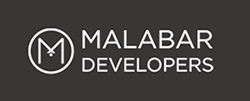Wooden flooring is still a trend setter when it comes to the flooring of the living rooms and office space. If you are considering the option of using wooden floors, you need to be right at any cost, because a single mistake could make the entire ambience of the room go haywire.
Wooden floors have unmatched beauty and blend in with almost all types of home and office decor. However, before making a wooden floor installation, it is necessary to know the pros and cons as well as the cost and design of the flooring.
The most common as well as the best design options for wooden flooring include laminate wood, solid hardwood, engineered hardwood, bamboo and cork. Let’s look into the details of wooden flooring now.
- Laminate Flooring
This type of flooring consists of layers of fiberboard compressed together, along with the topmost layer consisting of a photographic image of wood grain, stone or tile pattern to add to the looks and texture of the floors. Above this image layer, a protective coating is added to the surface of the flooring to withstand wear and tear and also to give an extravagant finish to the floorboards.
This type of flooring is one of the most cost-effective options, when it comes to wooden flooring installations. Moreover, it is manufactured in a way to withstand maximum wear and tear. There are click-lock installations when it comes to laminate flooring, in order to ensure an easy installation process. Click-lock planks snap together easily and can be laid over other flooring as well. Laminate flooring, though is a good option for the living space as well as office floors, can be easily worn off especially in the points of adherence.
- Solid Hardwood
This is the most expensive option when it comes to wooden floors. They are made by thick pieces of wood (approximately 18mm to 20 mm thick), and is made with a tongue and groove for a smooth installation process.
The strength of this type of flooring depends on the species of wood used for flooring. The harder the wood is the less susceptible it is to dings and scratches. Solid hardwood is an excellent way to add visual appeal to a home or business.
Solid hardwood will swell in moist conditions and contract as the area dries. The change of shape can alter the appearance of the floor and cause problems. Installation is a complex process, and for the best appearance must be done with great care.
- Engineered Hardwood
Engineered Hardwood is crafted to withstand various environmental changes and hence, its durability is assured. It consists of three to five layers of wood juxtaposed and glued together to form a 15mm thick plank. A real wood surface about 4 mm in thickness is applied to the top to allow it to be sanded and refinished a certain number of times to remove signs of damage, wear, and tear.
This type of flooring is more attractive than a laminate floor, but it is also less expensive than solid hardwood floors.
- Bamboo
Bamboo is an optimal choice for the enthusiasts of the go green builders, as it is environmental friendly and is also highly resistant to moisture. Bamboo grows faster than the usual hardwood and hence, using this wood does not account much to deforestation, unlike other hardwood trees. Moreover, bamboo flooring consists of softer wood when compared to the traditional wooden floors, therefore, it won’t cause you pain when you have to stand in for longer periods of time.
The downfalls to bamboo are the cost and its brittle state. Despite the fact that it is a durable type of flooring, it is more susceptible to dings and scratches than other wood floors. Due to the cost of importing from China and the care which must be taken during installation, it is a much more expensive option than traditional hardwood.
- Cork
The cork in cork wood floors come from cork oak tree bark which is widely grown in Spain, Algeria, Portugal, Italy, Morocco and Tunisia.
The pros of using cork as your wooden flooring is that it is environment friendly and is also a sustainable and renewable resource. However, the major drawback of cork is its cost, which involves the cost of import and installation, which is more expensive than the other types of wooden flooring.
Getting to know the woods better is the best solution that you have in hand before making your final choice on which wood to use in your living and office spaces.








